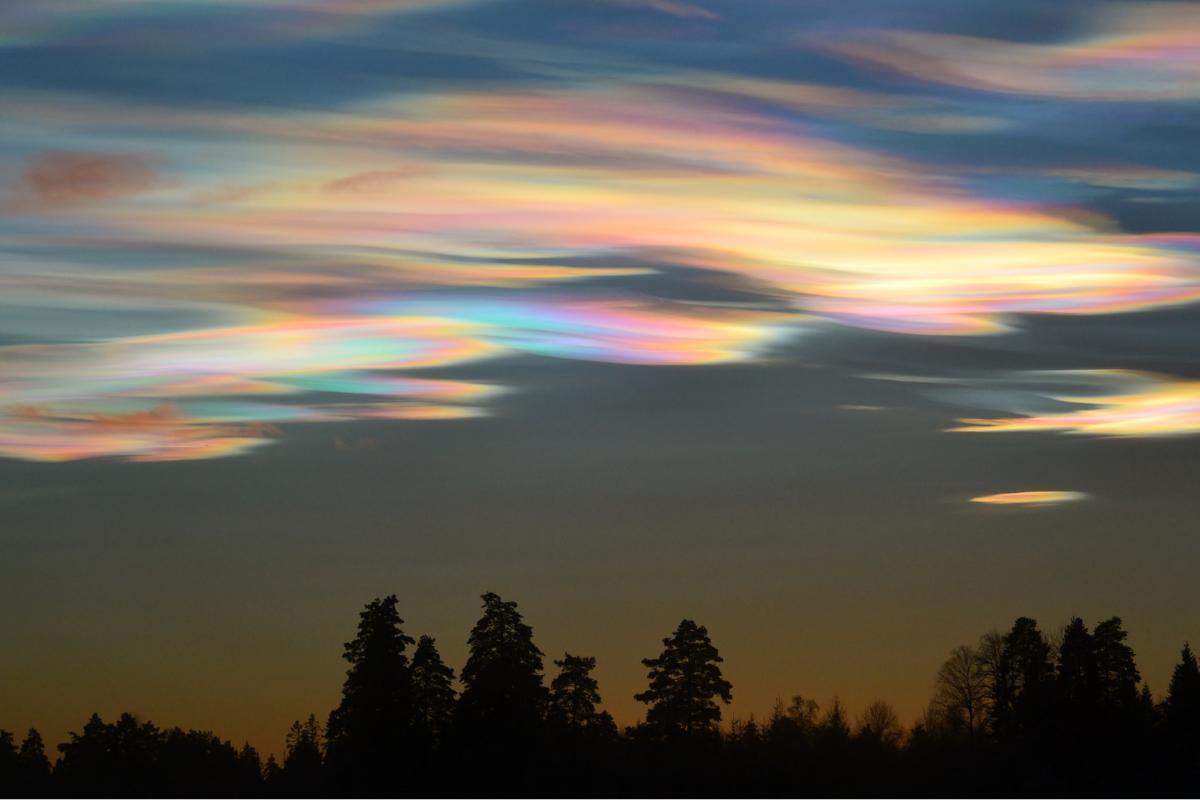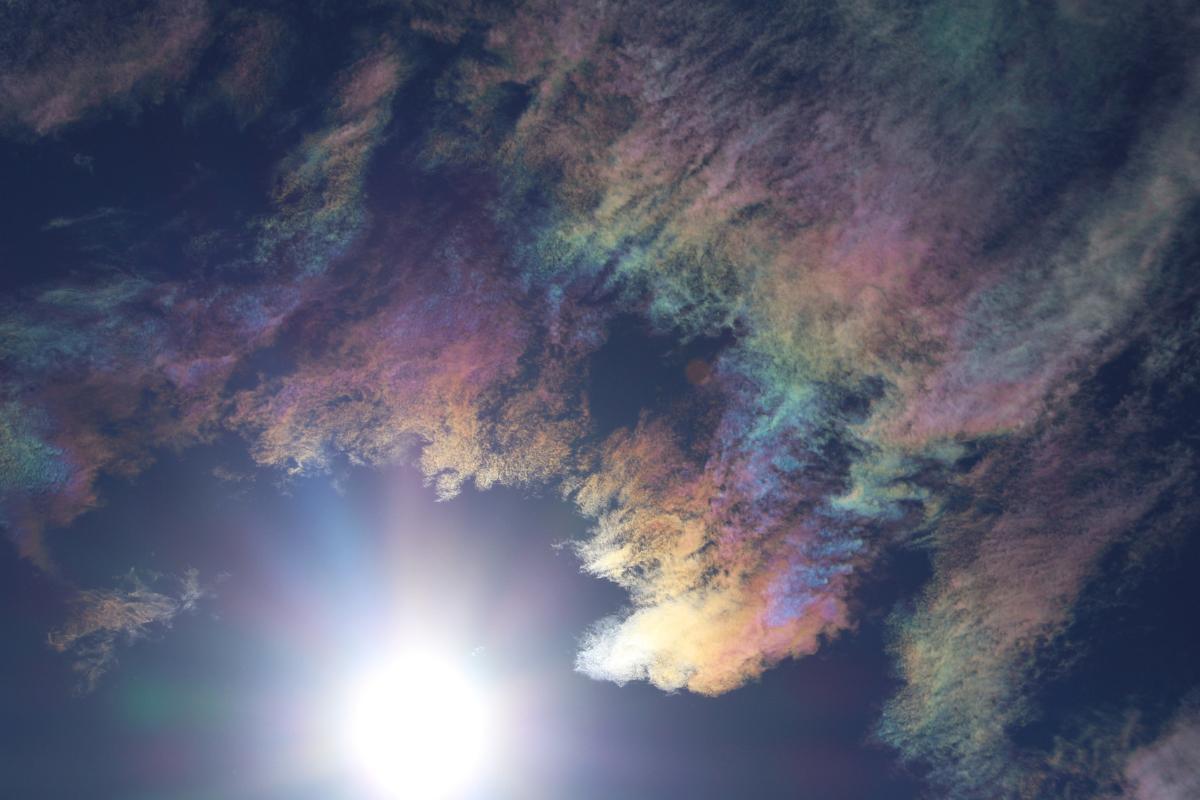How Iridescent Clouds Form Their Rainbow Colors


Ever noticed clouds that seem to display faint rainbow colors? Those are iridescent clouds, and they offer a glimpse into a cool interaction between light and tiny water droplets or ice crystals in the sky. But unlike a rainbow, which requires rain and sunlight, iridescent clouds reveal their beauty through a different atmospheric phenomenon: diffraction.
This article by thedailyECO explains the science behind iridescent clouds, explaining their formation and unique characteristics. We'll also uncover the historical and cultural significance of these colorful clouds, and why they've sparked wonder and curiosity for centuries.
What are iridescent clouds?
Iridescent clouds, also sometimes called rainbow clouds, are not a distinct cloud type themselves. Instead, they are a colorful optical phenomenon that can appear in various thin cloud layers, like altocumulus, cirrocumulus, lenticular, and cirrus clouds.
These clouds are commonly found in stratus, altocumulus, and cirrocumulus formations—thin, expansive layers containing small water or ice particles. The phenomenon occurs as sunlight scatters off specific-sized droplets or crystals within these clouds.
As sunlight passes through these particles, it refracts and disperses, creating a spectrum of colors. This phenomenon, called diffraction, creates the stunning rainbow effect we see in iridescent clouds. Regular clouds simply reflect sunlight, while iridescent clouds break it down into its component colors, similar to a prism.
The colors and intensity of iridescent clouds depend on factors such as cloud density, altitude, and the observer's position relative to the sun.
Most cloud formations, like puffy cumulus clouds or wispy cirrus clouds, are known for their distinct shapes and textures. Iridescent clouds, however, tend to be found in thinner, more uniform layers. This uniformity in droplet or ice crystal size is crucial for the diffraction of light that creates the iridescence.
It is also important to note that, iridescent clouds, while beautiful, don't hold a deep scientific significance in terms of weather prediction or atmospheric analysis.
The vibrant colors of iridescent clouds showcase the wonders of atmospheric optics. But did you know the sky can hold many more visual surprises? Explore what photometeors are, including halos, mirages, and other colorful displays.

How are iridescent clouds formed?
Clouds are typically composed of small water droplets or ice crystals suspended in the atmosphere. When sunlight passes through these particles, light scattering occurs, causing different wavelengths of light (colors) to bend in different directions as they interact with the particles in clouds. This scattering process is what gives rise to iridescent colors.
The effectiveness of light scattering depends on the size and shape of the particles in the clouds. For iridescent clouds to form, water droplets or ice crystals of a particular size are required, typically ranging from microscopic to several micrometers in diameter. If the droplets or crystals are too big or too small, or vary significantly in size, they won't diffract light effectively, resulting in a faint or absent iridescence. Uniformity is crucial for producing a clear and vibrant spectrum of colors.
The angle at which sunlight hits the particles in clouds is also crucial for the formation of iridescent clouds. When sunlight strikes the cloud at a specific angle, typically when the observer is positioned somewhat sideways to the sun and the cloud, the diffraction effect is strongest. This explains why iridescence is often most noticeable at sunrise or sunset when the sun sits lower in the sky.
What kind of clouds are iridescent?
Iridescent colors can appear in several cloud types, here are some cloud formations commonly associated with iridescence:
- Altocumulus: these mid-altitude clouds consist of a mixture of water droplets and ice crystals. When the size of these particles becomes very uniform within the cloud layer, iridescence can occur.
- Cirrocumulus: composed entirely of ice crystals, these high-altitude clouds exhibit iridescence when the ice crystals achieve a remarkable uniformity in size. The resulting iridescence is often a subtle display of pastel colors.
- Lenticular: these unique lens-shaped clouds can occasionally exhibit iridescence. This typically occurs when they are composed of very small, uniformly sized water droplets.
The key factor for all these cloud types is the uniformity of particle size. Thin, partially transparent clouds composed of uniformly sized water droplets or ice crystals provide the ideal conditions for the diffraction of sunlight, creating the phenomenon of iridescence.
Understanding how sunlight creates iridescent clouds is fascinating, but have you ever wondered how these wispy giants are born in the first place? Explore the science behind all cloud types, from fluffy cumulus to towering thunderstorms.

Are iridescent clouds dangerous?
Iridescent clouds pose no direct threat to people or the environment. They are not linked to adverse weather conditions such as storms or heavy precipitation.
Historical accounts sometimes link unusual sky phenomena, including iridescent clouds, to earthquakes. However, scientific evidence does not support these claims. While anecdotal reports exist of strange lights preceding seismic activity, a definitive connection has not been established.
It is true, though, that across civilizations, their appearance has been attributed to supernatural or divine forces. Norse mythology depicts them as bridges for Valkyries, mythical figures who carried fallen warriors to Valhalla. Similarly, some Native American tribes saw them as harbingers of spirits or messages from the beyond.
The colors themselves hold symbolic meaning in different societies. In China, iridescent clouds signified good fortune, often associated with prosperity and abundance. Conversely, some European cultures interpreted them as warnings of impending storms or celestial omens.
The fleeting beauty of iridescent clouds has also inspired artistic expression across cultures. Their colors have been incorporated into paintings, poems, and other art forms, symbolizing hope, impermanence, or the ever-changing nature of the natural world.
Iridescent clouds are a dazzling display, but the atmosphere holds stranger secrets. Explore the mystery of ball lightning, a rare electrical phenomenon, in another article on our website.
If you want to read similar articles to How Iridescent Clouds Form Their Rainbow Colors, we recommend you visit our Meteorological phenomena category.







